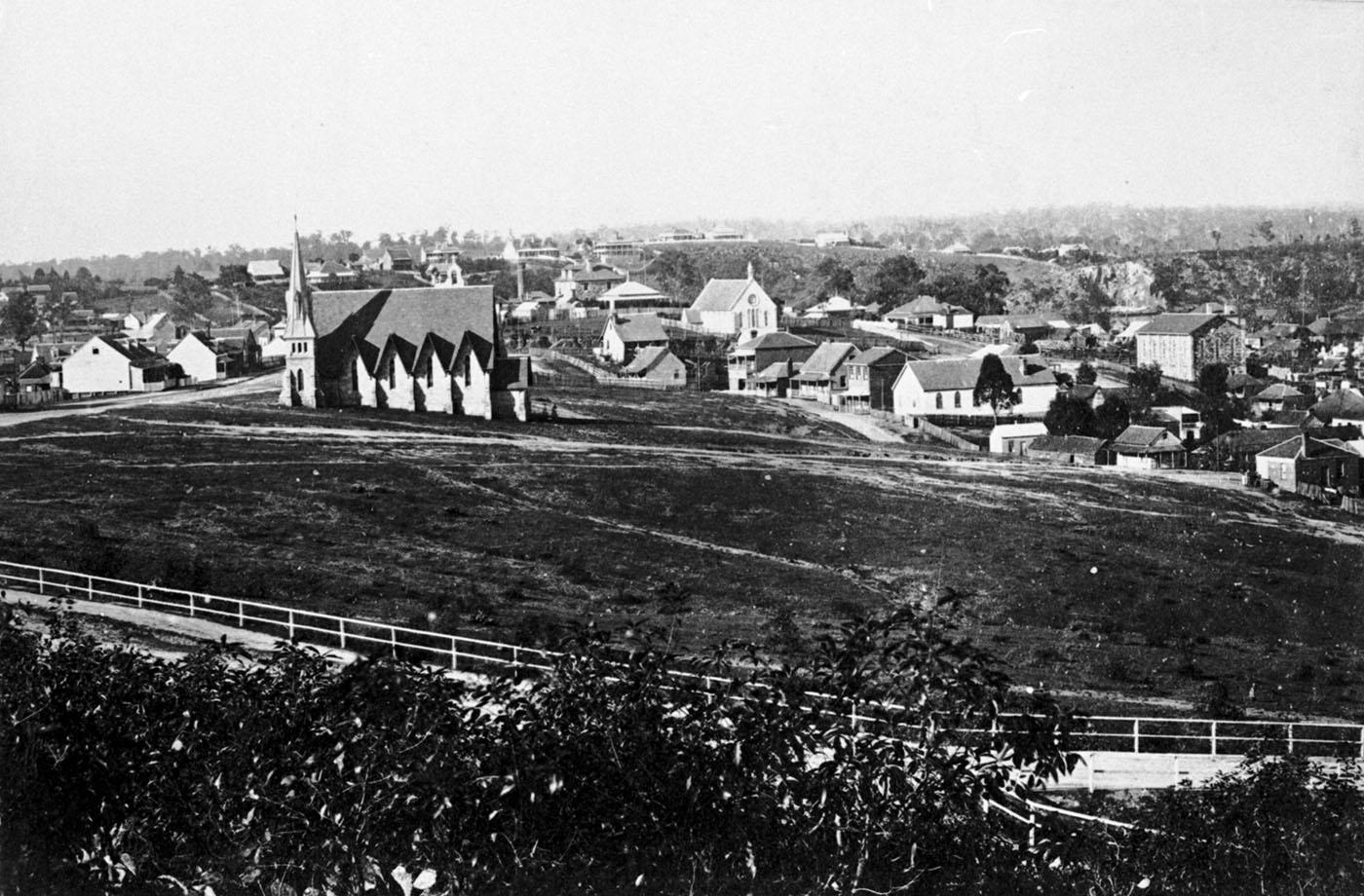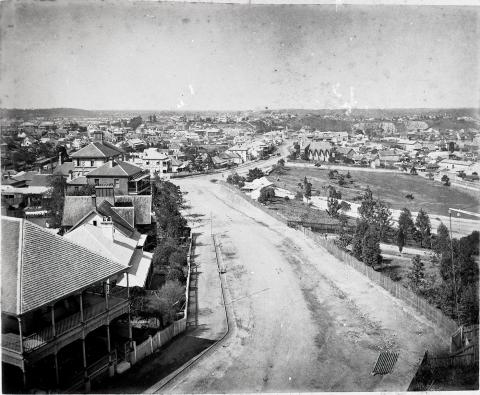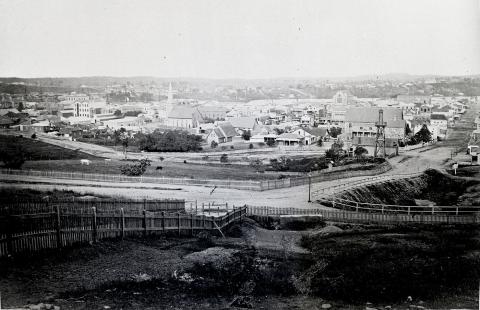Wickham Terrace, Spring Hill, 1869
Wickham Terrace, Spring Hill, 1869
Spring Hill, an inner Brisbane suburb, is immediately north and north-west of the city centre. The dividing boundary between Spring Hill and the city is Wickham Terrace which, incidentally, is the suburb's most notable thoroughfare.
The rising landscape was a source of spring water, and an example is to be found in the Roma Street Parklands.
In 1856 land sales occurred in Wickham Terrace and Leichhardt Street. It was a choice area, as the Terrace ascended a ridge where better-off residents could build houses to catch views and cooling breezes. Further subdivisions followed in the less elevated areas, and in 1862 the Spring Hill Hotel opened in Leichhardt Street. By the end of the 1870s there were several public and charitable institutions in Spring Hill: a mechanics institute (1864), a female refuge and infants home in Herbert Street (1871-1916), the Lady Bowen lying-in hospital at 497 Wickham Terrace (1890), Methodist church, a government school (1875) now Brisbane Central (1876), St Joseph's College (1875) and the Brisbane Children's Hospital (1878). The All Saints Anglican Church (1869) was built in Wickham Terrace, and is listed on the Queensland heritage register (QHR).
Spring Hill's elevated position made it an ideal site for service reservoirs, gravity fed from the Enoggera Dam. The reservoirs and their enclosures are near the windmill next to Wickham Park Built in 1871 and 1882, they were reconditioned and remained in use until 1962. In 2014 plans were announced to utilise one of the reservoirs as a temporary performance space for the Underground Opera Company with guided tours by the National Trust.
Whilst Spring Hill's elevated thoroughfares made for a desirable address, the lower areas were subdivided for working class families, within walking distance of employment, the city and Fortitude Valley. Moody's cottages at 8-16 Victoria Street (c1875, QHR) are surviving examples. The small blocks were cited as a reason for bringing in the Undue Subdivision of Land Act in 1885, prescribing a minimum size of 16 perches. By the end of the 1890s most of Spring Hill was subdivided and occupied.
Then and now...

You might also like
Location of this image
View Larger Map | See more historic photographs
- Category
- Time period
- Flickr URLFlickr - QSA

